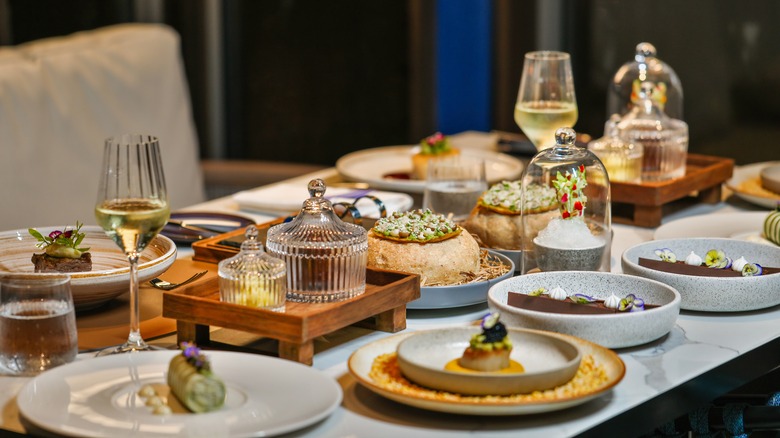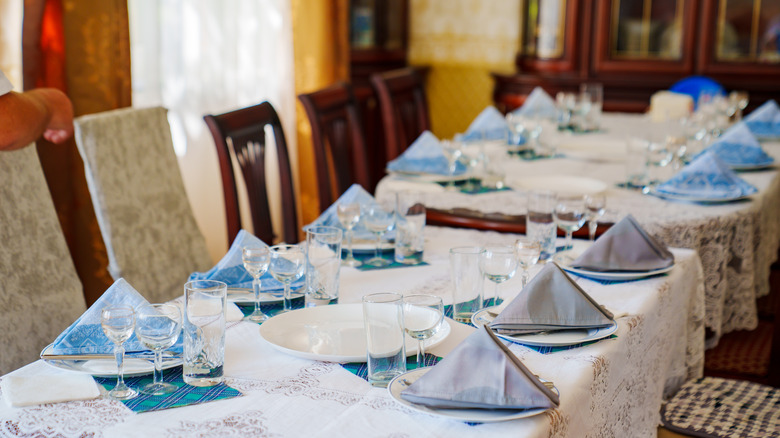The Historical Origins Behind Service à La Russe, Or Russian-Style Dining
While you may not be familiar with the term "Service à la Russe," or Russian-style service, you know what it is. While Service à la Russe — a title that refers to the way food is presented and arranged — is just one type of table service, it's the standard in Western homes and restaurants. Each course is brought to the table separately and sequentially. While it may seem natural to us now, this style wasn't always in vogue. Up until the early 19th century, French-style service, or "Service à la Française," was the norm throughout most of Europe.
Service à la Française was similar to a modern buffet or "family-style" meal. Elaborate dishes would be artfully arranged on the table, and diners could pick and choose. It originated in French courts during the Middle Ages, and it often served as an ostentatious display of wealth.
Service à la Française was showy. The presentation was showy, the parade of chefs was showy, and the role of the host — who carved the meat and helped serve guests — was showy. But as impressive as the dining style was, it wasn't practical. Service à la Française required a small army of chefs and waitstaff. Later courses tended to cool off before guests even had a chance to eat them, and diners only got to taste food that happened to be near them. Service à la Française was wasteful, too: hosts were often left with piles of leftover food after the meal.
How did Service à la Russe become popular?
Prince Alexander Kurakin, the Russian ambassador to France, is credited with introducing Service à la Russe to French society. According to some sources, Kurakin introduced the style of service after he was badly burned in a fire in 1810. Undeterred, he continued to host elaborate dinners. However, Kurakin was unable to reach out his arms — which made it difficult for him to serve himself from dishes in the middle of the table. To accommodate his injuries while he recovered, he introduced a style of table service where waitstaff would present diners with plates of food, one course at a time. Typically, the food was placed on a side table before waitstaff divvied it up for diners.
Service à la Russe didn't take off immediately, but by the mid-19th century, the French aristocracy started to see the practicality of the new style. In 1864, Urbain Bubois, chef to Prince Orloff of Russia, published a book explaining the benefits of Service à la Russe. By the 20th century, the French public had fully accepted the new style.
Service à la Russe has gone through several iterations over time. The number of courses and their contents varied with trends, and as the style spread, new variations popped up in England and America. Service à l'Anglaise, or English-style service, involves waitstaff carrying platters to each guest and serving them directly — it's the style "Downton Abbey" fans will recognize from the show. With American-style service, the waitstaff brings separate, pre-prepared plates from the kitchen.

